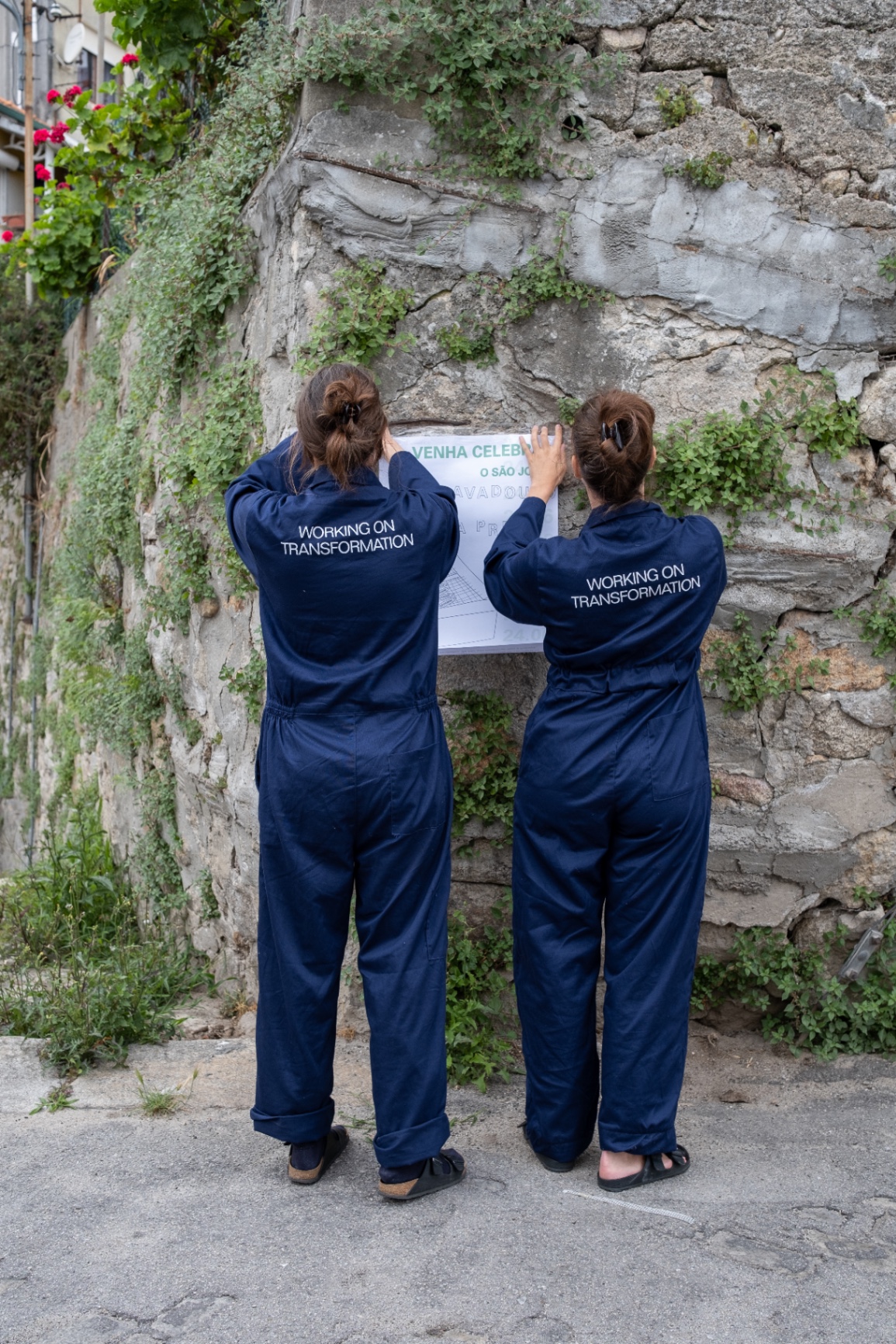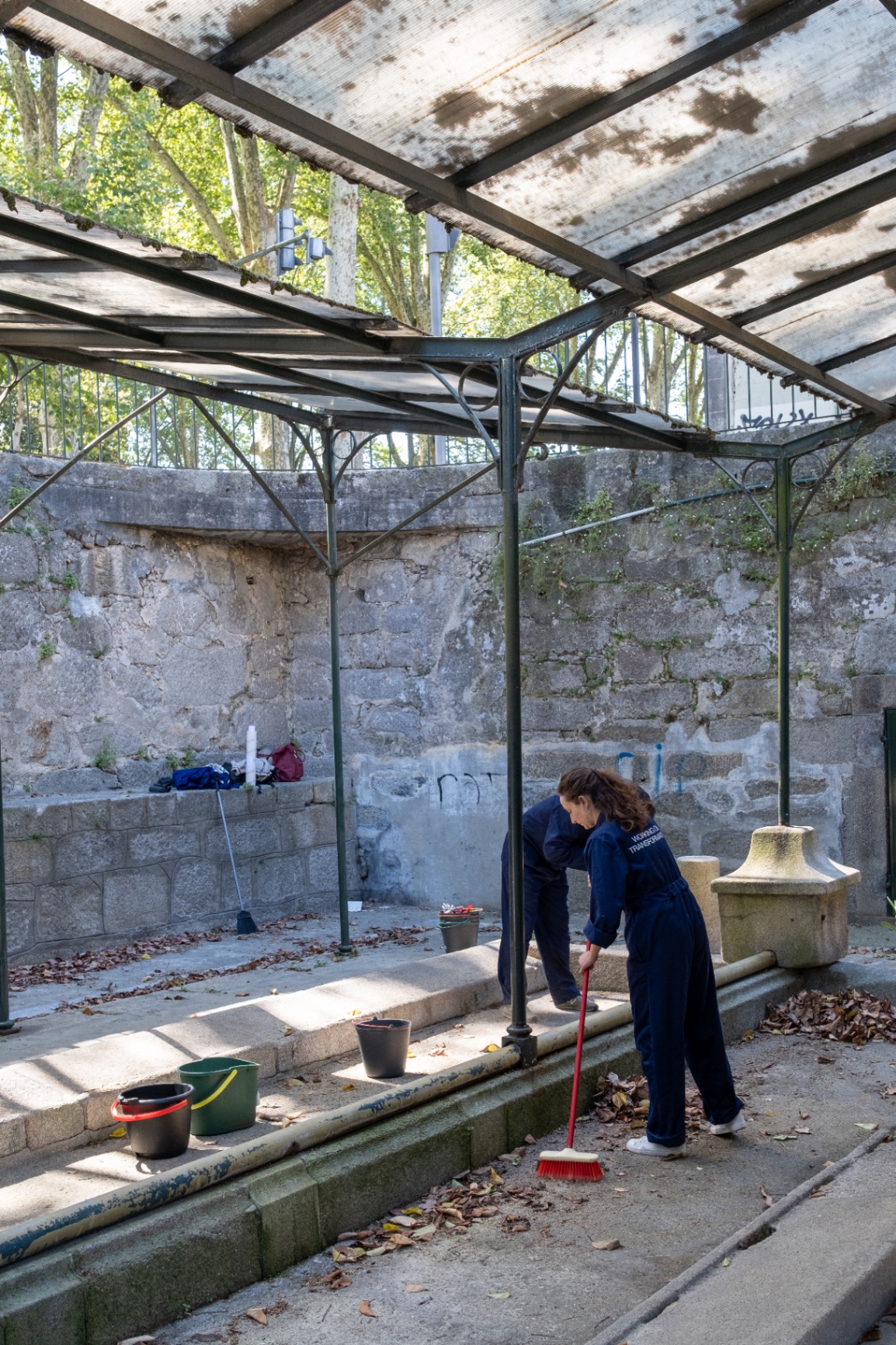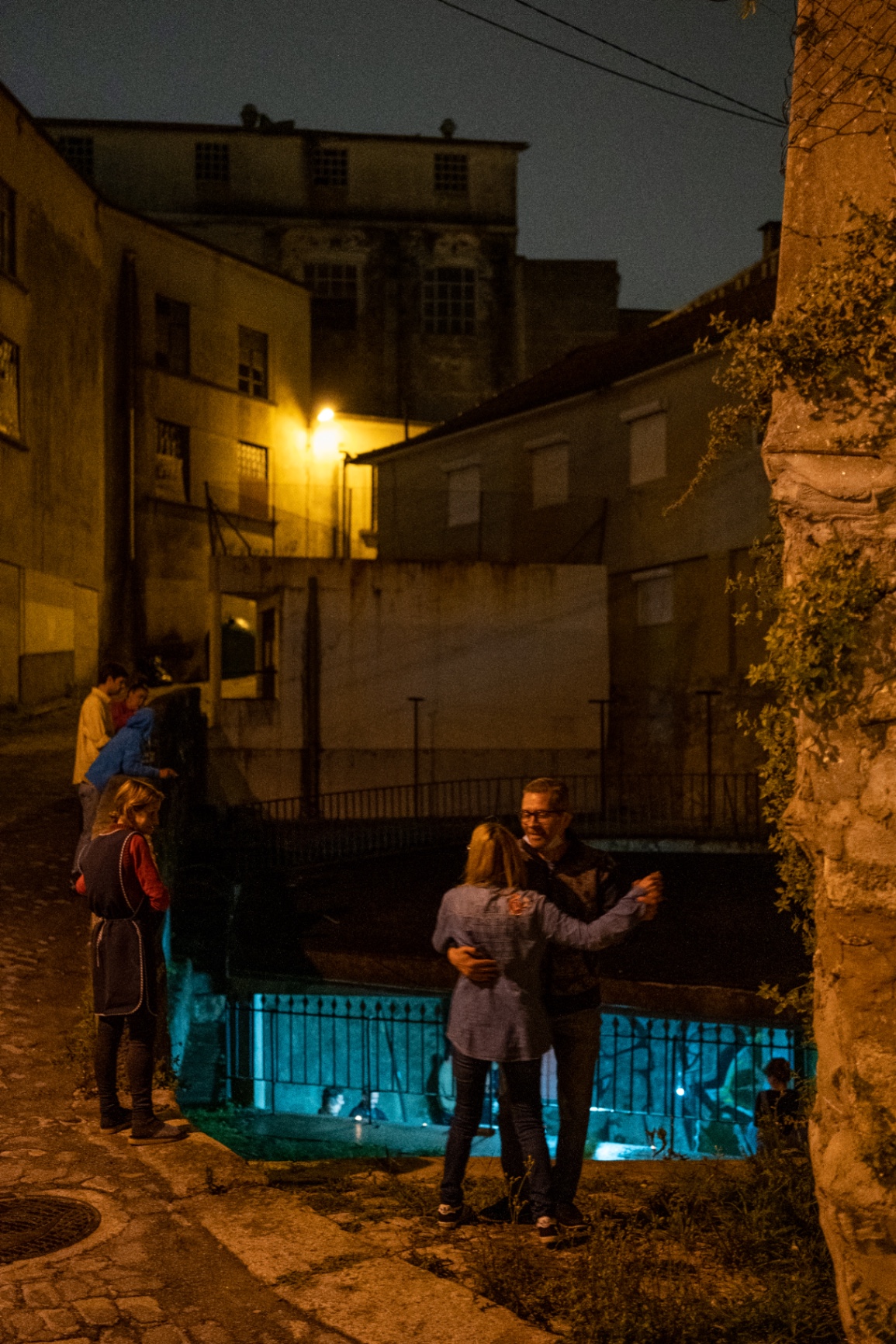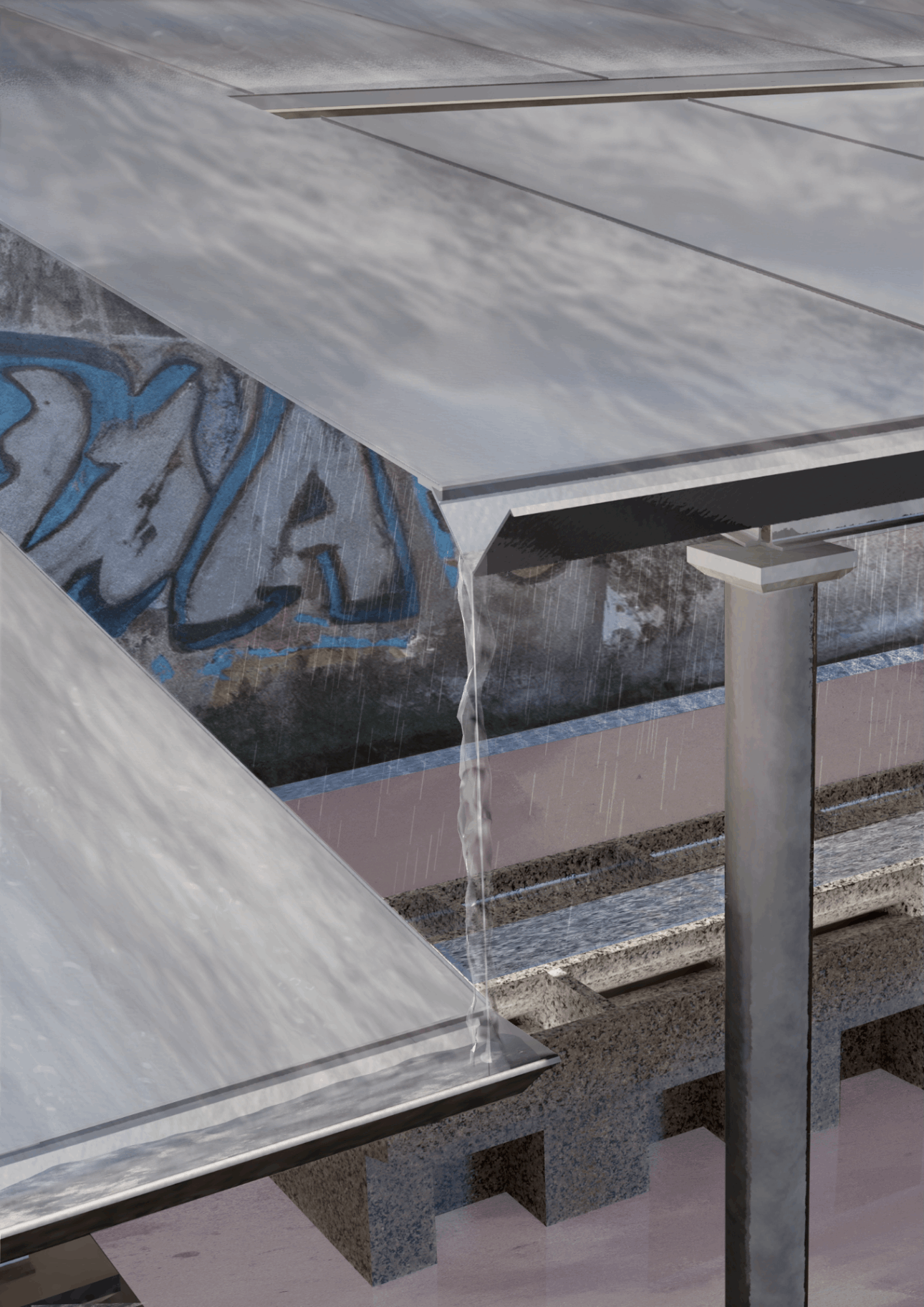Back
(Re)ACTING on the lavadouros of Porto
Year: 2022
Category: Landscape & Urbanism
Skills: Photography, Video, Interviewing, Performative Mock-ups, Field research, CAD-Drawings, Animations, Event planning, Exhibition, Curating, Rhino, Photoshop, Illustrator, After Effects
ABOUT This master thesis was conducted during the academic year 2022 by Chiara De Libero and Maria Margherita Innocenti with the support of the Chair of Architecture and Urban Transformation and the Chair of Theory and History of Urban Design at ETH Zurich. PROJECT DESCRIPTION Wash-houses may appear, to the untrained eye, as mere urban leftovers, unconscious memories of the past, remnants of infrastructures deprived by the time of their function and at the mercy of an uncertain future. Porto's 26 wash-houses are in reality precious spaces for the urban life, strategic points with the potential to simultaneously provide access to the resource of water and to that of collective space. And rather than being in resigned waiting, they have already been creatively reinterpreted by human activities. The different needs and practices of the people gravitating around them is slowly transforming each wash-house into a unique example, at times a temple of intimacy and silence, at times a busy passing space, at times a quiet meeting place. We encountered the wash-houses of Porto more than a year ago and have since then been engaging with these spaces. Through archive research, interviews, walks, live performances and mock-ups we formed and consolidated our own personal, deep understanding of them. Thus, the main purpose of our work became precisely that of sharing our perception of the wash-houses with a larger audience, in the best case triggering a discussion about the future of these spaces in the city of Porto. With this aim we used the media of the video, which is more easily accessible and has the power to reach all the viewer’s senses. The introductory part of the movie in particular shows how important and present the wash-houses were for the city in the past and how they are today instead perceived as remains and are less taken care of. It also demonstrates, however, how exactly this condition of negligence in which they are today has allowed and allows the people who gravitate around the wash-houses to creatively reinterpret them following their needs and practices. While the wash-houses can and should be looked at altogether as a larger system, one cannot avoid considering each one of them with its specificities, resulting from their different histories, the different neighborhoods in which they are located, the different actors who use them. For this reason, out of the still existing 26 wash-houses, we chose to have a closer look at three case studies, which are shown in the last three chapters of the video. There, we go through their different histories, engage and discuss with the different groups of people who use them and propose different approaches to intervene on them.
Hanging up posters and creating an instagram page (@lavadourosdoporto) helped us to promote the events that we organised in the wash-houses and get the attention of the people living in the respective neighbourhood.
Performative tools, such as the overall that we wore as soon as we arrived at each site helped us to "step into our new role," initiating a small "ritual". This consisted of deeply cleaning the washhouse, and besides being very necessary for hygienic reasons, it allowed us to gradually get acquainted with the space, slowly make it ours, and also gradually come into contact with passersby, who were always positively impressed by the cleaning action.
Performative mock-ups helped us to interact with the space and the people gravitating around each wash-house. Showing how singular each is in reality, impossible to separate from its specific context or the particular actors using it. In the wash-house above with the help of Pedro, the local electrician, a light was mounted in the covered space, which was then transformed into the perfect stage for a party, barbecue, dancing. Other more architectural tools were used on other wash-houses, for example a ladder, a curtain, a handrail.
The flow of water could be managed as to ensure that the homeless people, the gardeners from the community gardens below and anyone in need have access to it. At the same time the resource could be made more present and its path more visible within the public space. In this way, the wash-house would once again acquire a central role in the Fontainhas neighborhood. Making the water more accessible and visible would have a great impact not only on the space of the wash-house but also on the many activities around it, first of all the irrigation and taking care of the gardens and the washing of clothes, and secondly the other local practices triggered by those.
Chiara De Libero
More by Chiara De Libero
View profile



